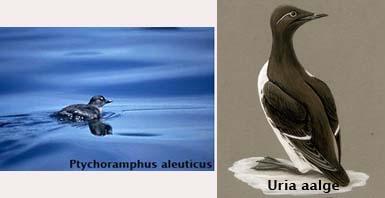Dr. Assaf Rosenthal

One of the measurable results of global warming is the depletion of food sources in the oceans, for birds and other animals. A team of researchers are surveying the bird populations on the Perlones Islands (in the Pacific Ocean off the coast of San Francisco), the islands are a resting and breeding place for thousands of birds, among them the "ocelet" (sea egret).
For forty years the researchers have been monitoring the condition of the birds by counting nests and checking the number of young birds that reach maturity and leave the nests. This is the second year in which a significant decrease in the number of preparations is evident. In about 20.000 nests that were examined, only individual chicks lived more than a few days, meaning that the majority of the pairs of the chicks did not manage to raise a further generation.
The terns spend most of their lives at sea and come to the coast of the Florence Islands for nesting, their food and the food they provide to their chicks is krill - tiny crustaceans (shrimps) that are an important source of food for many of the ocean's inhabitants. It turns out that the alarming decrease in the population of the Tochinones is due to hunger. The parents who prepared the nest and laid eggs are unable to provide the chicks with their food.
In examining the reasons, it became clear that a seasonal flow of cold water that brings up the plankton and krill from the depths of the ocean is late for the second year, meaning that the birds that come to nest at a fixed time "trust" that ocean current to provide their food, since the flow is late, the birds are hungry. The delay in the ocean current caused the death of birds from California in the south to British Columbia in the north. The concern that emerges from the survey data is that not only the Tochinon population is being harmed, but: the condition of the Tochinon population is a warning sign for the food situation in the sea and as such for the possibility of a general deterioration of the marine environment.
The researchers hope that the delay in the flow is nothing more than an accidental "malfunction" that will not occur in the coming years, but there are also those who claim that this "malfunction" is not a one-off but a direct result of global warming. When the temperature off the coast of California is two degrees higher than the multi-year average, it can be feared that the delay in the cold ocean current may return every year, that is, not a one-time event/malfunction but a seasonal routine.
Climatologists, biologists and oceanographers report that "El Niño conditions" exist on the coasts during non-El Niño periods, meaning that the water temperature along the coast of America remains high. The high temperature creates a barrier against seasonal winds (which under other conditions would come from the Gulf of Alaska), the barrier is "removed" and the winds arrive late. It is the winds that drive the cold ocean current (which brings up food), but it happens two months late, that is, after the nesting period!
Like the terns, many birds, fish and others depend on cycles that may change, rapid changes to which it is impossible to adapt. Like the Tochinon, the Uria (Uria aalge) also comes to the islands only for the nesting period. The Oriya's food is mainly young leek fish. Like the preparation, the Oriya population is also small and decreasing due to hunger, i.e. a lack of lamprey fish. The halibut is an important base for the food fishing industry. Fishermen catch less fish, even for fish eaters who lack food. True, we have not yet reached the stage where the coastal dwellers and fishermen of the western US are hungry, but if we rely on what is happening around us...?
And again, one can only hope that the changes in the last two years were fleeting and in the coming seasons the flow cycle will return to normal.
